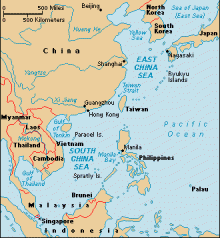The Future is Autonomous
Posted in Blog,National SecurityApril 6, 2016Comments Off on The Future is Autonomous

In his best-selling book, War Made New, military historian Max Boot notes: “My view is that technology sets the parameters of the possible; it creates the potential for a military revolution.”
One only has to read a few lines of defense media reports of autonomous systems development or industry advertisements regarding a particular air, ground, surface or subsurface unmanned systems to come away with the impression that autonomous systems represent completely new technology, an artifact of the 21st Century, or perhaps the late 20th Century. But in fact, autonomous systems have been around for over a century.
As a naval analyst looking at major military trends, one of the most cutting-edge and intriguing technologies out there is in the area of autonomous systems. But are we really leveraging this awesome technology in the most effective way. Maybe not. We discuss this in our U.S. Naval Institute Proceedings article, “More Brains, Less Brawn.” An excerpt:
The future for autonomous vehicles is virtually unlimited. Indeed, concepts for new missions, such as using autonomous aerial vehicles to detect approaching ballistic missiles are being generated by visionaries who have seized on the enormous potential of these systems. But while their ability to deliver revolutionary change to the Navy-after-Next is real; this process is not without challenges.
This vision must be supported by both a commitment of the top levels of naval leadership and also by leadership and stewardship at the programmatic level – from acquisition professionals, to requirements officers, to scientists and engineers in the Navy and industry imagining, designing, developing, modeling, testing, and fielding these systems. If the Navy does this well, autonomous vehicles will continue to change the tactics of today’s Navy, the operational concepts of tomorrow’s Navy, and will usher in a strategic shift for the Navy-after-Next.
You can read this entire article here:
http://georgegaldorisi.com/wp-content/uploads/Galdorisi-Dec-11.pdf









